The most contagious violence, the most dispersed, but at the same time the most hidden behind the face of innocence is the act of seeing. The problem has been developed extensively, among many others, by the American writer Susan Sontag in her book “On photography. Reality and image in our society” (1977). It’s the bible of photographers, well known since its release until these days. The flow of thoughts written by Sontag develops the fundamental themes belonging to the visual culture of our timesSontag addresses this discourse with simplicity, and highlighting that we speak of culture, that is of ourselves, it seems right that the text should be aligned, becoming universal, empathetic, and internally connected. The writer uses the method, which the 2018 literature noblewoman Olga Tokarczuk would have called “the tender narrator“. It’s intriguing that these cultural connections and influences are indeed omnipresent. Tokarczuk, in the first words of her noble speech, refers to the black and white photograph of her mother, indicating the first encounter with this object and the story around it, the moment of the birth of her strenght as a writer.
The presence of the “innocent eye” is the question immersed in the culture since the beginning of the development of visual culture, being its own “the chicken or the egg?”. From a purely physical point of view, the eye forms perceptions simply by adapting to the environment in which we live. Therefore, it remains a “courier” of messages of neutral emotional value. On the other hand, since the moment in which the message is decoded by the brain, finally (speaking of the milliseconds) appears, the eye can no longer remain the innocent messenger. Hence all the exaustively complex issues established in this regard in the social context, that is, how much we are really guilty when we are “only” looking. Wu Tsang at her individual show “There’s no non-violent way to look at somebody” at Gropius Bau in Berlin, presents the provocative approach to this “semantic bomb”, investigating both the act of watching and the latent violence of the camera, both in a remarkably indirect way.
In her research, Wu Tsang puts central concern on language. As we enter the first room of the exhibition, we face the sculpture “Sustained Glass” (2019). It’s a large, transparent piece of glass with writing, a rather archaic object in an era of digital circulation, conceived by the artist thanks to the experience lived during the residency at Gropius Bau, which the artist was the first to do – “In House: Artist in Residence”. Use of the word “house” in the name of the residence emphasizes the experience incorporated into knowing the building and its associated communities. The light that used to pass through the large windows of the gallery, has become the source of inspiration for Wu Tsang, who instead of covering her glass with allegorical images as in history, dresses it with the etched text and this process of corrosion becomes the metaphor of language toxicity. The artist has found one of the last producers of handmade glass in the “flashed-glass” technique in Bavaria. This type of glass is created by coating a colorless glass with one or more thin layers of colored glass. This method neither completely obscures the light, nor completely permits its passage. With this gesture already shown in the first room, an artist presents ardor for language, intermodality of her artistic acts, as well as concern with “transparency”, here literally, but not only. The artist refers to the “exquisite corpse” associated with the surrealists – a method or game by which a collection of words or images is collectively assembled. Each collaborator adds a composition in sequence, either following a rule or being authorized to see only the end of what the previous person contributed.
In the huge and airy surface of the 7 rooms in the Gropius Bau gallery, Wu Tsang proposes dialogues between videos, sculptures, as well as the written word. The artist involves dance and music, giving voice also to the play of light. The title of the exhibition comes from the “Sudden Rise at a Given Tune” – the textual component of a homonymous performance held at the Tate Modern in London, on 25 March 2017 written by Tsang, boychild and Fred Moten (collective “Moved by the Motion” ). The roots of the video documentaries of the artist go back to the observations in the queer clubs and community of the activists. In her work, she also pays attention to the vitality of safe spaces. “Sudden Rise (…)” as a performance, was a series of shows that challenge boundaries by presenting a collage of words, films, movements and sounds, in which interwoven are the language and actions of a number of pivotal twentieth-century civil rights activists, poets and fundamental essayists for civil rights including Langston Hughes, James Baldwin and WEB Du Bois, along with texts by Jimi Hendrix and reflections by Hannah Arendt.
In the first room, on the glass, there are some phrases referring to the “SHU” (“Security Housing Unit”) – a form of common isolation in the US prison system. It’s been concluded that this penalty causes severe pain or mental and physical suffering among prisoners. And we talk only about people included in gender binarism, but there are also transgender people, whose isolation, along with these conforming to their biological sex, creates the new and uncanny case. Furthermore, “SHU” is just a way of not committing to the problem at the social level. Artist points out that people outside of gender binarism suffer state-sanctioned violence that creates extreme security risks. “For me, cinema is a space of emotional truth, to shift the way that people think about others,” explains Wu Tsang.
In the second room, we are struck with hypnotic slow-motion video. The soft and sweet film stars Fred Moten, a collaborator of Wu Tsang. Artist often emphasizes how important collaboration is to her. The movie “Girl Talk” (2015) is the game of flowing lights, relaxing sounds, crystal reflections, “The Garden of Delights” for the soul. In the foreground, Fred Moten moves enthusiastically and slowly sings, full of inner joy, acapella, the standards of jazz (“Girl Talk” by Betty Carter). “Gravitational Scansions” (2017) hanging on the wall next to the video are the prints with secret messages composed of the dots and dashes that mark the syllables of the poetic pieces.
The question of opacity emerges everywhere and starts from the preeminent thought of Edouard Glissant, who fought for the right of opacity for all – “it’s an ethical stance, which acknowledges the problem of the West demanding <transparency> when indeed so much of experience and identity exceeds categorisation”. (exhibition catalog) The concepts like “SHU” and “opacity” are listed and described in the glossary in the exhibition catalog. Propagating knowledge and awareness seems to become the true mission of the exhibition. In the third room, the subject of the research is, in fact, “to study”. Wu Tsang recognizes the educational value of touch and keeps her eyes open to “studying” that doesn’t commit to plunging into big books to “take a bite of wisdom”. The installation created with crystals hanging from the ceiling refers to sensory consciousness, mutability of materials, optical impressions – crystals seem to rotate thanks to their light reflections. Being hard and strong as they are, when they move, it feels like they have changed their state. The installation is surrounded by summer photos that document the times when artist-duo with like minds spent together studying, reading and creating. Not working diligently in insolation, but asking questions and discovering processes pushes us to grow – the artist seems to be saying. In the “We hold where study” (2017) exhibited in room 4, the artist doesn’t finish the title-phrase, leaving it open to interpretation. The very large video installation connects two screens, presenting dancing people moving from one video-environment to another. The work was created with the camera entwined in the movement. Instead of remaining the rigid observer of the already existing situation, it seems more alive and doesn’t allow the approach (always seen also in the metaphorical sense) to remain fixed.
The exhibition continues for another three large and abundant rooms. Wu Tsang tackles the theme of seeing with tenderness, starting from the assumption that “seeing” itself can have the infinite quantity of meanings. Susan Sontag, in her second book of the series – “Regarding the Pain of Others” (2003), at the center of the reflection this time doesn’t put a photographer, but a spectator. He must define his attitude towards the fact that he sees someone’s suffering. Wu Tsang declares “I don’t really question anymore, who is this for, how is this gonna communicate. I really just try to say what I feel needs to be said, in the way that I need to say it, and I find that the work finds itself out into the world, where it needs to go”. (click here to see the video)
Info:
Wu Tsang. There is no no-violent way to look at somebody
04.09.2019 – 12.01.2020
Gropius Bau, Berlin
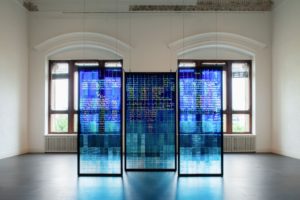 Wu Tsang, Sustained Glass, 2019. Installation view There is no nonviolent way to look at somebody, Gropius Bau, Berlin, 2019. Photo: Luca Girardini, courtesy: the artist, Galerie Isabella Bortolozzi & Cabinet
Wu Tsang, Sustained Glass, 2019. Installation view There is no nonviolent way to look at somebody, Gropius Bau, Berlin, 2019. Photo: Luca Girardini, courtesy: the artist, Galerie Isabella Bortolozzi & Cabinet
 Wu Tsang, One emerging from a point of view, 2019. Installation view There is no nonviolent way to look at somebody, Gropius Bau, Berlin, 2019. Photo: Mathias Völzke, courtesy: the artist, Galerie Isabella Bortolozzi, Cabinet & Antenna Space
Wu Tsang, One emerging from a point of view, 2019. Installation view There is no nonviolent way to look at somebody, Gropius Bau, Berlin, 2019. Photo: Mathias Völzke, courtesy: the artist, Galerie Isabella Bortolozzi, Cabinet & Antenna Space
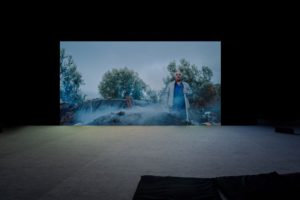 Wu Tsang, One emerging from a point of view, 2019. Installation view There is no nonviolent way to look at somebody, Gropius Bau, Berlin, 2019. Photo: Mathias Völzke, courtesy: the artist, Galerie Isabella Bortolozzi, Cabinet & Antenna Space
Wu Tsang, One emerging from a point of view, 2019. Installation view There is no nonviolent way to look at somebody, Gropius Bau, Berlin, 2019. Photo: Mathias Völzke, courtesy: the artist, Galerie Isabella Bortolozzi, Cabinet & Antenna Space
 Wu Tsang, One emerging from a point of view, 2019. Installation view There is no nonviolent way to look at somebody, Gropius Bau, Berlin, 2019. Photo: Luca Girardini, courtesy: the artist, Galerie Isabella Bortolozzi, Cabinet & Antenna Space
Wu Tsang, One emerging from a point of view, 2019. Installation view There is no nonviolent way to look at somebody, Gropius Bau, Berlin, 2019. Photo: Luca Girardini, courtesy: the artist, Galerie Isabella Bortolozzi, Cabinet & Antenna Space
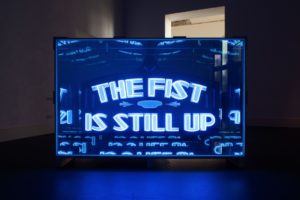 Wu Tsang, Safe Space, 2019. Installation view There is no nonviolent way to look at somebody, Gropius Bau, Berlin, 2019. Photo: Luca Girardini, courtesy: the artist, Galerie Isabella Bortolozzi
Wu Tsang, Safe Space, 2019. Installation view There is no nonviolent way to look at somebody, Gropius Bau, Berlin, 2019. Photo: Luca Girardini, courtesy: the artist, Galerie Isabella Bortolozzi
 Wu Tsang, One emerging from a point of view, 2019. Installation view There is no nonviolent way to look at somebody, Gropius Bau, Berlin, 2019. Photo: Mathias Völzke, courtesy: the artist, Galerie Isabella Bortolozzi, Cabinet & Antenna Space
Wu Tsang, One emerging from a point of view, 2019. Installation view There is no nonviolent way to look at somebody, Gropius Bau, Berlin, 2019. Photo: Mathias Völzke, courtesy: the artist, Galerie Isabella Bortolozzi, Cabinet & Antenna Space
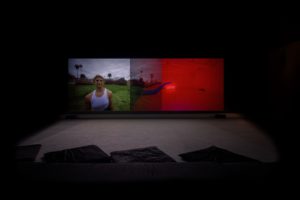 Wu Tsang, We hold where study, 2017. Installation view There is no nonviolent way to look at somebody, Gropius Bau, Berlin, 2019. Photo: Mathias Völzke, courtesy: the artist, Galerie Isabella Bortolozzi
Wu Tsang, We hold where study, 2017. Installation view There is no nonviolent way to look at somebody, Gropius Bau, Berlin, 2019. Photo: Mathias Völzke, courtesy: the artist, Galerie Isabella Bortolozzi
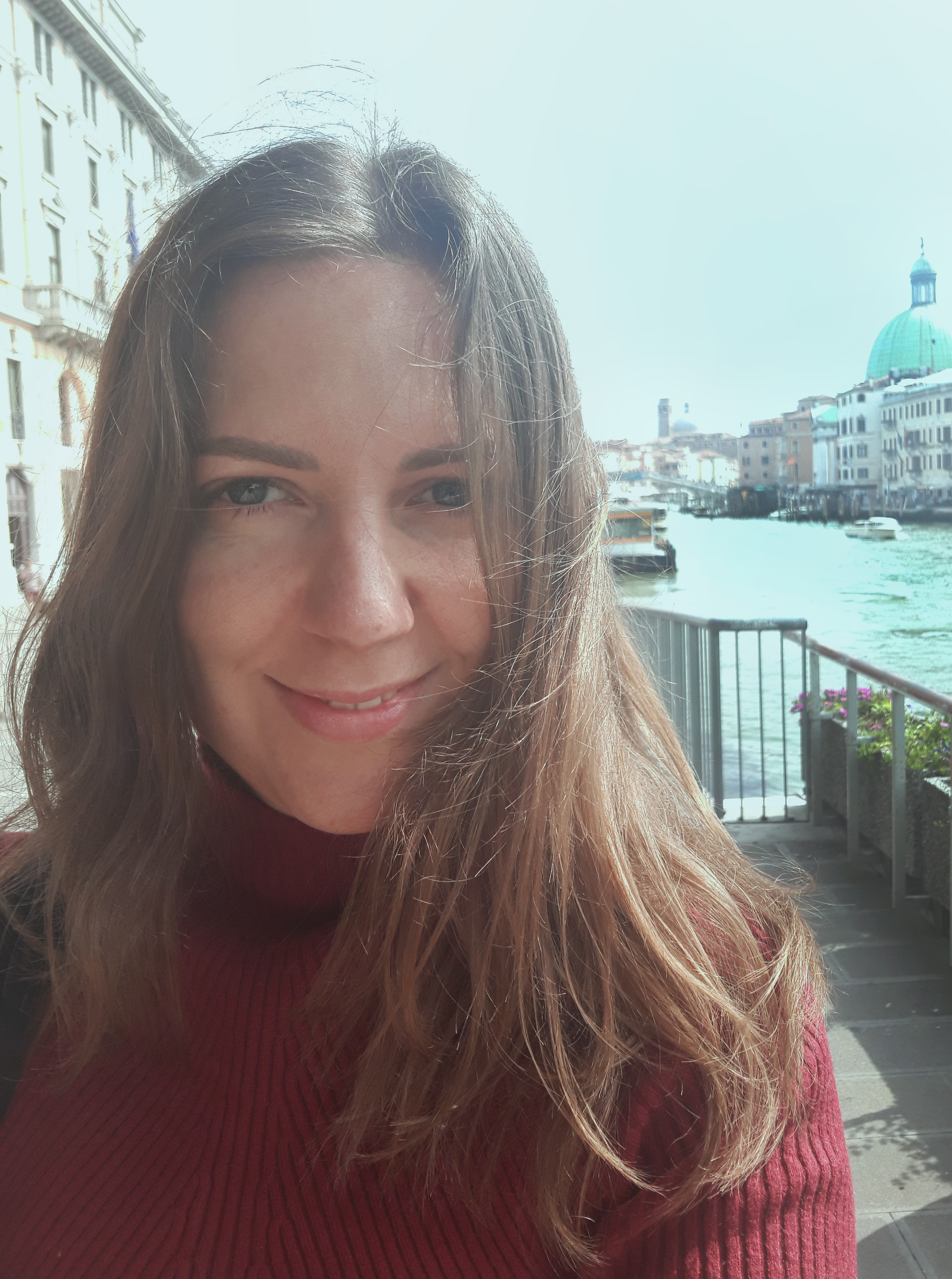
Graduated in Photography and Visual Recording Arts at the University of Art in Poznan (Poland) in 2013. Graduated in Psychology from Adam Mickiewicz University in Poznan in 2015. In 2018 she attended the “Latest Trends in Visual Arts” course at Brera Academy of Fine Arts. She writes art texts for various magazines in English, Italian, French and Polish. Artist, curator and researcher. Born in Poland, she lives and works in Milan.


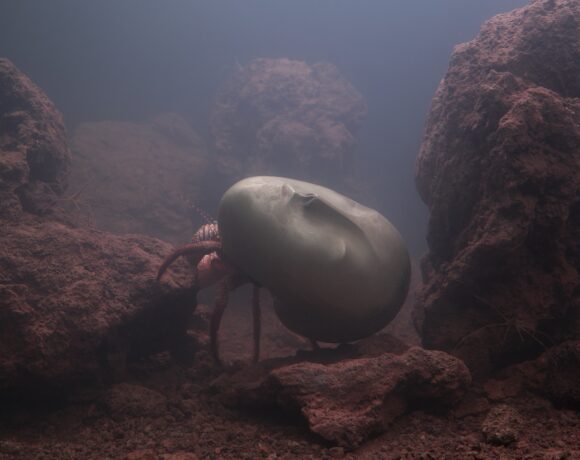
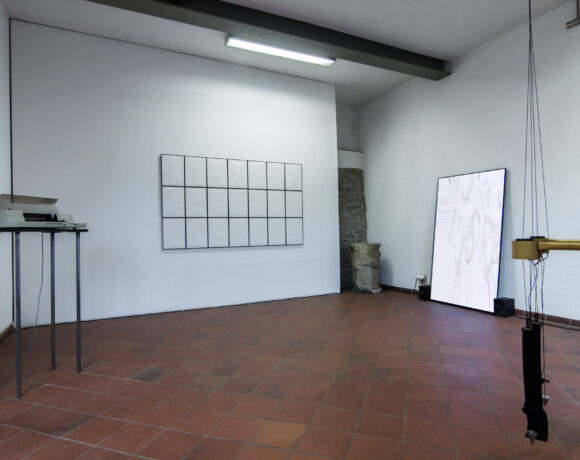
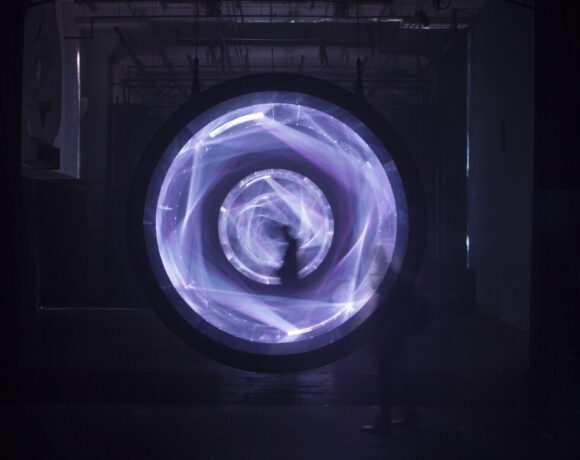

NO COMMENT